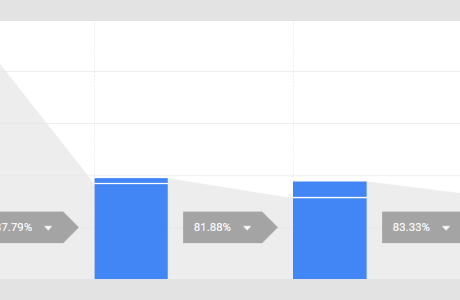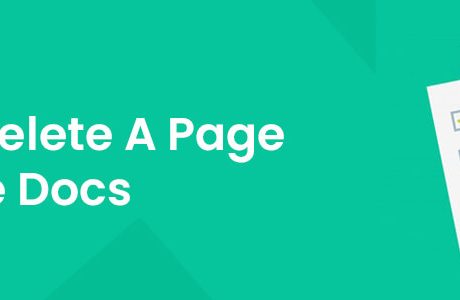Category: Google
Browse the latest google news, trips, guides & info at contentrally.com. We are dedicated to sharing the trending google news, info, guides & ideas.

How To Allow Chrome To Access The Network In Your Firewall Or Antivirus Settings?
Seeing this message pop up on your screen - “Chrome has been blocked by your Windows Firewall” can irritate. It is more irritating because your firewall does not exactly tell you why Google Chrome is accessing your network. This hampers your work and only creates more trouble for you. Therefore, if you want to find the remedy to this problem, then you need to learn how to allow chrome to access the network in your firewall or antivirus settings. To do so on Windows and Mac computers, there are various ways. To learn them, continue reading. Methods To Allow Chrome To Access The Network In Your Firewall Or Antivirus Settings To learn how to allow chrome to access the network in your firewall or antivirus settings, can follow three methods. These methods involve excluding Google Chrome from the list of potentially harmful or unauthorized lists in three places: Windows Firewall.Windows Defender.Third-Party Antivirus Software. Read More: Ways to use Google analytics to find content ideas Method 1: Add Chrome As An Exclusion To Your Windows Firewall Settings To add Chrome as an extension to your Windows firewall, follow these steps explained in order: Press both the Windows + R keys to open the Run menu.When the Run menu opens up, search for Control to open the Control Panel.In the control panel, click on System and Security.It will then show many options to you. Here, select Windows Defender Firewall.Click on the option called Allow an app to pass through the Firewall.When new options open up, select the option to Change Settings.A Yes prompt will open up. Accept by clicking on it.A new set of options will open up. Click on Allow other Apps.You will now get an option to Add Apps. Click on it.Here, you will be able to add the app Google Chrome from the Browse option. Click on it.In the browse menu, go to these folders in order: C: > Program Files (x86) > GoogleChrome Open the folder to select the file called Chrome.exe.Click on the Add option.Another pop-up will appear on the screen. Select and tick mark both the options - Allow Access To Private Networks and Allow Access to Public Networks.To save all these changes, click on OK in the Control Panel. Method 2: Add Chrome As An Exclusion To Your Windows Defender Settings To exclude google Chrome from your Windows Defender Firewall, you need to follow these steps in order to learn how to allow chrome to access the network in your firewall or antivirus settings: Open the Start menu - you can do this by clicking on the Start icon in the taskbar or simply by clicking on the Windows key on your keyboard.Search for an option called Update and Security and click on it.Then, click on Open Windows Security.A panel with various options will open up on the left edge of the screen. Click on Virus and Threat Protection.Open up the Manage Settings option.Look for the Exclusions option by scrolling down through all the available options.Open the option called Add or Remove Extensions.Many other options will now open up. First, choose to Add an Exclusion.Click on Browse.Look for this folder in this order: C: > Program Files (x86) > GoogleChrome Select Chrome.exe from all the files in the folder.Click on Select Folder.Click on OK on the Windows Defender Firewall settings. Method 3: Excluding Chrome As A Blocked Application From Your Antivirus Settings Open your antivirus software.Go to its Settings.Click on an option called Exclusions.Look for the option named Allow Application Access to Network. Click on it.The Browse menu will open up. Look for this folder: C: > Program Files (x86) > GoogleChrome Click on Chrome.exe. It will be near the bottom of the page.Select Add or Allow option on your antivirus software settings. Method 4: Allow Chrome To Access The Network In Your Firewall Or Antivirus Settings On A Mac To learn how to allow chrome to access the network in your firewall or antivirus settings on Mac, you need to : Open Settings (click on the icon on the bottom of the screen that looks like an Apple).Go to System Preferences.Choose the option Security and Privacy.Choosing the tab above will open up the Firewall menu.Click on Firewall Options.Click on the “+” that will be at the bottom of the menu.The lists of all apps will open up. Browse and choose Google Chrome.Click on Add.In the end, click on OK. Click Here To Read: Pros and Cons on Google Translation Accuracy Frequently Asked Questions (FAQs): 1. How Do I Allow Chrome To Access The Network In Your Firewall Or Antivirus Settings Windows 11? Allowing Chrome access to your network in the firewall has remained the same as the process used for Windows 10. You need to go to your Firewall settings from the Start or Run menu to add Chrome as an exclusion manually. 2. Why Is My Firewall Blocking Google Chrome? Your firewall might be blocking Google Chrome because of any of the following reasons:1. You are trying to open an unauthorized website using Google Chrome (primarily targeted toward pornographic websites and pirated torrent websites). 2. You downloaded Chrome from an unofficial third-party website. 3. Will I Lose All My Chrome Data If I Give It Permission To My Network In Firewall? You will not lose all your saved data on Chrome, like your starred bookmarks and saved passwords. This process will not tamper with your Chrome data in any way at all. 4. Is It Safe To Allow Chrome To Access My Network In Firewall? Yes, it's safe to allow Chrome to have access to your networks through your firewall. However, this can be risky if you open unauthorized websites that Google does not verify. Conclusion! You must learn how to allow chrome to access the network in your firewall or antivirus settings. This is important because you might face the problem of Chrome being blocked from your networks by your firewall. This can happen for many reasons, which your firewall will not specify. To do so on Windows computers, you need to give Chrome access to your network by going through your Windows Firewall and Windows Defender security settings. You can also manually change the firewall settings of your antivirus application. You can also do the same for Mac computers and a Macbook. Read Also: How To Use Google Ads To Your AdvantageHow Does Google Ads Generate Responsive Search Ads?Why I Can’t Download From Google Drive? How To Fix It?
READ MOREDetails
On The Display Network, Your Ad Is Eligible To Show On A Webpage If Your:
Q1. On The Display Network, Your Ad Is Eligible To Show On A Webpage If Your: The correct answer to the question is “Keywords that match Webpage’s Content” On The Display Network, Your Ad Is Eligible To Show On A Webpage If Your - Detailed Explanation To The Question Now that you know the right answer to “on the display network, your ad is eligible to show on a webpage if your:” I hope now you are eager to know why we have chosen “Keywords Match That Webpage’s Content” as the correct answer! Basically, the display campaign ads will show on a webpage once your keywords match the webpage content. Okay, how do you think the Google ads get ranked? It is because Google’s algorithm is capable of analyzing the content of your webpage and denotes the main theme based on the keywords. If it matches your ad, then Bingo!, nothing can stop your ad from getting visibility. There are several factors based on which the compatibility of your ad is tracked. Examples include language, keywords, topic, latest browsing history of a visitor, location targeting, etc. In essence, this type of target ad is called “ Contextual targeting. ” What Is Contextual Targeting? Understanding the details of contextual targeting would help you get more relevancy to the question “on the display network, your ad is eligible to show on a webpage if your: ” In simple terms, Contextual targeting is a type of personalized advertising that helps pay-per-click ads to display on related sites. Wanna get started with contextual targeting? Input topics or keywords and your campaign will be all set to appear on Display Network. This procedure kickstarts with adding content topics or keywords to the ad groups in your Display Network Campaigns. Google’s system automatically evaluates each content considering link structure, page structure, text, etc. What To Do To Build A Contextually Targeted Campaign? Keyword Contextual Targeting is actually the procedure of making the automatic placements (keyword-targeted ads) the same as to the Display network sites. Pondering over how to create a contextual targeted campaign? Check out the guidelines of Google in the below section: 1. Optimize Optimization is mandatory in contextually targeted campaigns. For instance, you can keep monitoring the Networks tab and eliminate weak matches. Furthermore, focus on including or deleting keywords, adjusting bidding, and pausing optimized ad groups. 2. Generate Keywords The contextually targeted campaign is all about keywords. Hence, keyword generation forms a crucial part here. Ensure that each group has 5-50 unique pieces keywords contextual to the theme of the ad groups. 3. Define The Ad Groups Make sure that every ad group has particular descriptive themes to explain more about the services or product. Also, you can add branded keywords in keyword-targeted ad groups. 4. Conversion Tracking Implementing conversion tracking is another way to analyze how your campaign is performing. Want in-depth insights about conversion data (site-level)? Then set up Google Ads Conversion Tracking. 5. Set Bids For Ad Groups Here comes another most crucial requirement for building a contextually targeted campaign- setting ad group bids. To do this, fix the search bid to the prior display network bid at the same level. ➤ One pro tip - Add Negative Keywords: This might sound astonishing, but adding negative keywords will refrain your ads from appearing on extraneous searches. In this way, the relevancy of the ads will sustain on display network sites. So on the display network, your ad is eligible to show on a webpage if your keywords match webpage content - It’s justified! Frequently Asked Questions (FAQ) Q1. What Is The Correct Answer? - On The Display Network, Your Ad Is Eligible To Show On A Webpage If Your: On the display network, your ad is eligible to show on a webpage if your keywords match that webpage’s content Q2. What Is An Example Of Contextual Targeting? Contextual targeting facilitates an advertiser in displaying the right ads to the right context. For instance, if an ice cream parlor publishes an ad on a website about Waffle ice cream, it will be a contextual targeting. Q3. How Effective Is Contextual Targeting? Contextual targeting is all about personalization for users. Eventually, it gives a redefined edge of profitability to the business. The Bottom Line To conclude, contextual targeting is the main funda in making ads relevant to the Display Network sites. Only upon following it, your ad will be eligible to be displayed on the webpage. Now you know the answer to “ on the display network, your ad is eligible to show on a webpage if your: ” Why don’t you take the next step and apply it on your own business? You will simply rock in terms of visibility and conversions. Did you find this guide informative? Let us know your opinion in the comment area below. We will be pleased to hear your valuable viewpoints. Read Also: Two SEO Trends to Take Advantage of In 2022 Content Optimization: What It Is and How To Do It Things to consider while doing SEO What Do Ad-in And Ad-out Mean In Tennis?
READ MOREDetails
How Does Google Ads Generate Responsive Search Ads?
How Does Google Ads Generate Responsive Search Ads? Google Ads works on the probability of mix and matches headlines and description lines that have been provided Detailed Explanation Of How Does Google Ads Generate Responsive Search Ads? Google ads generate responsive search ads by matching all the headlines and description lines that have been provided. Keep in mind that responsive search ads and responsive display ads are two different terms, and you must not mix them. Actually, responsive search ads can assist you in creating an ad that modifies to show more texts and messages to your visitors. But how it works? The more descriptions and headlines you enter, the opportunity to serve ads by Google increases significantly. This matches the queries of your customers, and hence, it can improve your ad performance to a great extent. Meanwhile, Google assembles the text into several ad combinations in a way that eliminates redundancy. Benefits Of Responsive Search Ads There are several benefits of responsive search ads and some of them are listed below: Increase ad group performance by attracting more conversions and clicks. Reach more potential clients with many descriptions and headlines. You can tailor your descriptions and headlines to your normal location or customer’s location. Save time by providing several headlines and description options that give your ad a chance to display to your potential customers. Create flexible ads that provide you more room to share your message and adapt to devise widths with potential customers. What's The Benefit Of Having Multiple Ads? Yes, there are many benefits of having multiple ads in an ad group. You need to have many keywords and matching ads in the same ad group. One of the best advantages of having multiple ads is that you can have ads in all types and sizes in the form of images or text sizes. This is only when you advertise on the search network or display network. Another is you can advertise different varieties of ads via Google Ads than other kinds of text ads. You can have rich text ads, mobile ads, dynamic search ads, and image ads. Each ad should consist of multiple ads in order to increase the better return on investment. How does Google ads generate responsive search ads? will no longer be a matter of great concern for you. One more benefit of having multiple ads is that you get variations in keywords and finally, you have better ad performance. Therefore, this is all about the benefits of having multiple ads in an ad group. What Should Your Search Ad Have In Order To Promote More Clicks? Your search ad must have a Call to Action button in order to promote more clicks. The main objective of your ad is to get conversions, and at the end of the day, your ad must get it. Otherwise, it is a failure of your business strategy. Besides, there are also reasons why search network campaigns show conversions but no view-through conversions, and you need to understand this in detail by analyzing the performance of your ad. How To Create A Responsive Search Ad? The main question that arises here is “how to create a responsive search ad?” and below described are the steps to perform the same. Go to Ads & extension. After clicking the plus button, select Responsive Search Ad Enter final URL and display path text Then, type the headlines. You need to type a minimum of three and a maximum of fifteen. Now, enter the descriptions. You can enter descriptions from two to four. Click Save. Which Are The Three Required Parts Of A Text Ad? The three required parts of a text ad are Headline, Description, and URL. Your text ad includes three headlines where you can enter up to thirty characters each to promote your goods and services. A text ad is actually a form of marketing communication that advertisers can use to promote their goods and services on the Google Network. how does google ads generate responsive search ads? Moreover, there are places where the text ads can appear or display. The ads can appear across the Google Network and search result pages that consist of Display Networks, Search Partners, and Search Network. How does Google Ad generate responsive search ads? Summing Up The answer to your question how does google ads generate responsive search ads? is “Google Ads mixes and matches headlines and description lines that have been provided.” The above-described information explains the same, and you must know how to generate responsive search ads to drive high conversion rates and target your potential customers. Read Also: How Many Jobs Are Available In Real Estate Investment Trusts? Which Client Would You Advise To Advertise On The Search Network? How Do Upgraded URLs Help Advertisers With Third-Party Conversion Tracking?
READ MOREDetails
What Report Indicates Where Users Start Or Exit The Conversion Funnel?
What report indicates where users start or exit the conversion funnel? Actually, the conversion funnel is a phrase used in e-commerce to describe the journey a consumer takes via a search engine or internet advertising, converting to a sale, or navigating an e-commerce website. This is exactly the way to visualize the flow and conversion path of potential customers into paying customers. These visitors can be generated via a number of methods such as cold outreach, paid ads, social media, content marketing, and SEO. A Simple Guide To Conversion Funnel [caption id="attachment_28122" align="alignnone" width="693"] https://www.megalytic.com/blog/understanding-the-funnel-visualization-in-google-analytics[/caption] Funnels help us to view the process easily by provisioning us a visual representation of the conversion data between each step. This enables you to: Be aware of bugs, technical nuisances, and browser issues. Determine what language or copy might be modifying our customer’s emotional behavior during sign-up or checkout. Discover what steps are causing errors or customer confusion. A standard funnel visualization report might command such discrepancies, and it is not soft enough to cope with sudden user behavior. However, in these types of cases, the Google Analytics goal glow report is useful to a great extent. You can track the conversion funnel in Google Analytics by using your funnel visualization report for insights and analysis. According to our research, pageviews can occur non sequentially for funnel matches. All You Need To Know About Google Analytics Goal Flow Reports A Goal Flow report illustrates your sales funnel. It describes how efficiently visitors to your eCommerce site are driving the route from awareness to sales, to desire, and to interest. This report is going to help you identify loops and stuck points. At the same time, it can provide strong insights that can leverage to boost returns on investment (ROI) and conversion rates. Besides, you can create your own custom report and track the same via Google Analytics report. To access the goal flow reports, navigate to Conversions >> Goals >> Goal Flow. You would never know the goal flow and visualization reports without having to implement a goal and setting up a funnel. What Can You Do With The Goal Flow Report? [caption id="attachment_28123" align="alignnone" width="693"] https://www.megalytic.com/blog/understanding-the-funnel-visualization-in-google-analytics[/caption] Now, with the goal flow report, you can review questions such as: Is there one segment of traffic that acts differently? Is there a spot where traffic loops behind? Are there many surprising exits from a step in the core of the funnel? Where do users enter my funnel? In addition to this, you can determine information such as: Exit points Funnel steps skipped Stuck points Internal loops Conversion rates Drop-off points Percentage of traffic completing your goal Percentage of traffic visiting certain pages The popularity of landing pages Sources of traffic. What Report Indicates Where Users Start Or Exit The Conversion Funnel? The answer to your question What report indicates where users start or exit the conversion funnel? is Goal Flow. This report is used to perform a funnel analysis. Moreover, start and exit in the goal funnel provides you an overview of which steps users exits or enters in your conversion process. This is a very important part that you need to understand in detail. All the points in the funnel are vital to complete a conversion successfully. The goal flow report also displays the path your traffic traveled towards goal conversion. This report helps you know if unexpected problems or visitors are driving your content as expected. Therefore, to view the goal flow report, you need to Sign in to your Google Analytics account, and then you can open the reports to view the same. The Final Thoughts What report indicates where users start or exit the conversion funnel? Goal Flow is the correct answer to this query. The above-explained information describes the reasons for this. However, if you come across any doubts, you can mention them in the comment section below! More Resources: 5 Smart Ways to Boost your Credit Score The Importance of Writing Business Reports in College Different Types of Conversions to Make the Most of Spare space
READ MOREDetails
How To Delete A Page In Google Docs
Google docs is a trendy choice for writing documents, articles, blogs, and other word processing types. However, the accessibility of the service is what made it most popular among people of every age group. All thanks to Google for developing such a user-friendly writing platform. It is effortless to pick up, open, write and edit documents. The best thing about using Google docs is its flexibility. Needless to mention that it permits you to type words any time at any place. However, there are certain features that you need to be aware of before you jump on to writing in Google Docs. One such part is deleting a page. Hence, it is crucial to know how to delete a page in google docs for writing without hassle. The present guide aims to explain how to delete a page in google docs in different ways. Benefits Of Using Google Docs Google Docs is a product offered by Google as a substitute for Microsoft Word. You can write on a doc file even when your device is detached from an internet connection. Most importantly, it does not charge a single penny from the users, unlike Microsoft Word’s latest versions. Here are some merits of Google docs that are must rea before knowing how to delete a page in google docs: 1. Different Features Google Docs has identical features as MS Word. However, not everything is similar between these two programs. Google rarely incorporates new features to Docs. For example, 2014’s Suggested Edits was an innovative addition. It was an alternative to the Track Changes feature in MS Word. 2. Internet Connectivity If you have never seen magic ever in your life, you will see some in Google Docs. For instance, facing internet connectivity issues while writing is prevalent. In such a situation, you can write on docs smoothly without the same. Actually, unlike Microsoft Word, Google docs operate in a web browser. Owing to this, even if your internet connection is unstable, you can get offline access to all the doc files. 3. Suite Integration Just like Microsoft Word offers integration with other Microsoft Office Suite, docs support supports identical collaboration. But did you know that Google Docs has tie-ups with other Google office programs? It mainly includes sheets and slides. Isn’t it amazing? 4. Google Drive Integration It is the unique part of Google Docs and one of the main reasons behind its larger number of users. Whenever you create and save a Google Doc with its name, it automatically saves your file in associated Google Drive. Therefore, if the system shuts down while writing, don’t panic; the doc is already saved in your drive. Furthermore, you can link your docs with any other cloud storage service freely. Thus, it is crucial to know apart from how to delete a page in google docs. You can also read- Why I Can’t Download From Google Drive? How To Fix It? 5. Link to Grammarly.com A great advantage that Google docs provide is its linkage to Grammarly. So if it is a professional report or academic essay, you just need to run an in-depth grammar check. Till now, you knew that both Microsoft Word and Google docs have inbuilt grammar checking tools. Although, there is something more than this in Google Docs. The doc where you are writing is accessible to the Grammarly website. To enjoy this innovative trait of Google Docs, sign in to your Grammarly account. Then add it as an extension to the Docs website, and there you go. The grammatical errors will be automatically detected as you write. Top Ways To Delete An Unwanted Page in Google Docs We hope that you have gained a clear idea of the functionality of Google Docs by now. Hence, let us concentrate on the purpose of the article- how to delete a page in google docs: Option 1: Simply Hit The Delete Option It is the simplest and most common way to delete a page from Google Docs, although many users are unaware of it. So before trying anything more complicated, try this step. Just place your cursor at the end of the written text on the previous page and press Delete. Most of the time, you can make it work without any other challenge. Nonetheless, several users across the globe do not know how to remove a page in google docs just because of insufficient knowledge. Option 2: Remove Page Break Another thing that you may have overlooked despite using Google Docs is to remove a page break in it. While writing with utmost concentration, sometimes you insert a page break in the document unknowingly. What happens as a result of this is the addition of a new page below. This is quite natural, and there is nothing to be concerned about this. Every other person has come across this problem. Indeed, you can try deleting it, but that would not be as much effective as omitting a page break will be. Option 3: Use Custom Spacing Once you are familiar with using the Delete button, you can try being a little advanced. First, navigate to the Format menu and click Line Spacing. Following this, hit the Custom spacing option. The main focus here is the spacing between two paragraphs. If you select the spacing of 1.5 or 2.5, it might lead to the generation of unwanted pages. In addition, it will make your document look lengthy. If you want to avoid this, follow the procedures above and delete pages. Decrease the value to 0 and check whether the extra page at the end has been deleted. Knowing how to remove a page in google docs is equally essential to understand how to add a page on google docs. Option 4: Adjust Or Remove Google Docs Margin Last but not least, you can solve the issue by adjusting margins sometimes. For example, Google docs often attempt to insert huge margins at the bottom. As a result, it reduces the content area and increases the number of extra pages. In order to eliminate or remove the Google docs margin, go to File and then Page Setup. Shrinking down the margins will allow you to return to the correct number of pages you want in your file. If you are writing an essay or a news article, this procedure is exceptionally efficacious. It will make your content file short and crisp. The Final Thoughts To conclude, writing efficiently on Google docs is pretty straightforward. But you need to have clear concepts regarding its multidimensional features. From the guide above, it is evident that Google docs have some distinctive characteristics. How to delete a page in google docs? - We have chosen this question as it is more frequent among new users. Nevertheless, you must grasp its full usabilities to avoid unwanted disturbances while creating an important document. Deleting a page in a doc is a point that you may frequently need while processing words. Hence, be accustomed to not only one hack but also several tricks to serve this purpose quickly. Follow us for more engaging and helpful articles like ‘how to remove the page break in google sheets,’ etc. More Resources How to Create an Effective FAQ Page for Your Website Good Literacy is Good Literacy: Improving Reading and Writing Is Big Data Capable Of Predicting The Next Best-Selling Book And Author: An Analysis
READ MOREDetails
Which Practice Would Violate Google’s Editorial And Professional Requirements?
Question: Which practice would violate Google’s editorial and professional requirements? Showing a ValueTrack tag in the text. ✓ Including a question mark in the headline. Directing people to a page other than the advertiser’s homepage. Including a border on the ad. Correct Answer: Showing a ValueTrack tag in the text Detailed Explanation Of “Which Practice Would Violate Google’s Editorial And Professional Requirements?” As we all know that Google is the most popular search engine all over the world and people use this constantly for all queries. Now, if you are running an online business, then you must be aware of the practices that violate Google’s professional and editorial requirements. However, if you are not, then we are there to help you to make you aware of Google’s algorithms. Now, the practice that would violate Google’s editorial and professional requirements is by showing a ValueTrack tag in the text. Therefore, by using ValueTrack parameters, you can start track information about your ads; this is one of the easiest ways to consider. On the other hand, in order to implement a variety of user experiences, Google requires that all destinations, extensions, and ads fulfill high professional and editorial patterns. What Type Of Content Google Doesn’t Allow? You need to understand that there are certain types of content that Google doesn’t allow at all, and you need to implement the same for your ads. Now, let’s discuss the various types of content that Google doesn’t allow at all. i). The Promotional Content Where Landing Page Is Missing If your content does not reflect where the users are redirected, then it can be a violation in the eyes of Google. Let’s take an example, using the display URL “contentrally.com,” but it is leading to a landing page “www.google.com.” Thus, this does not make any sense for the user as well as Google. ii). The Promotional Content Without Identifying Information Now, if your question is “Which practice would violate google’s editorial and professional requirements?” then the next practice would be promoting content without identifying proper information, i.e., display URL, product, or company’s name on the final static frame. iii). The Promotion That Doesn’t Make Sense Another practice that violates Google’s editorial and professional requirements is encouraging promotion that does not make any sense for the user. For example, promotions have blurry images, videos, or making ValueTrack tags that are visible in the ad text. Importance Of ValueTrack Parameters - All You Need To Know ValueTrack parameters are URL parameters that you can attach to your ad’s landing page URLs. These parameters assemble data about the origin of your ad clicks. At the same time, these parameters work with Google Analytics or your personal tracking explication to present useful information on your paid search ad. Now, to use ValueTrack, you must include a unique tag to your ad’s destination URL, and the parameters store precise specifications about the ad in the URL. To make your concept simple, we have listed the top ValueTrack parameters that all B2B advertisers should include in their PPC campaigns. {adposition} This is the position of the page that your ad is visible on the SERP. It enables you to get an idea of what type of value you are getting from bidding on several positions. {random} The name of this ValueTrack parameter itself signifies that it is a random Google-generated number. To make your CRM properly read and access the data, you need to designate unique identifiers to your keywords. {placement} This parameter is utilized for display campaigns and this is one of the most important tags as it is equivalent to the {keyword} tag. {keyword} This tag is for the keyword that triggered your advertisement. You can use ValueTrack to assign a particular keyword string to a lead or sale. {network} Another ValueTrack parameter is {network} which signifies whether the click dawned on the main Google Search page. The Final Thoughts Now, you don’t have to worry about “which practice would violate google’s editorial and professional requirements?” because the above listed are the solution to it. You just need to avoid showing a ValueTrack tag in the text. More Resources: How Do Upgraded URLs Help Advertisers With Third-Party Conversion Tracking? Your Ad Can Show To A Potential Customer When Your Targeted Language Matches
READ MOREDetails
What Scope Applies To Custom Metrics?
Question: What scope applies to custom metrics? User Session Hit ✓ Event Correct Answer: Hit Detailed Explanation Of “What Scope Applies To Custom Metrics?” The value of the custom metric is only applied to the hit to which the value was sent. The custom metrics have different scopes, similar to custom dimensions. Therefore, hit-level scope applies to custom metrics. At the same time, custom metrics and dimensions enable you to join Analytics data with non-Analytics data. Example - CRM data. According to Google, hit level custom metrics get associated with all the hit level dimensions with which they were sent. Actually, custom metrics are used to measure and segment differences between levels in games, authors of pages, logged-in and logged-out users, and any other business data you have on a page. About Custom Metrics Custom metrics are the same as Monitoring’s built-in metrics, except: You can remove your custom metrics You can write time-series data to your custom metrics Custom metrics typically start custom.googleapis.com/ and this vary from the built-in metrics You can build custom metrics within your Google Cloud projects. How To Create & Use Custom Metrics? Custom metrics are a strong way to custom data to Google Analytics. Now, let’s discuss how to create and use custom metrics. Reading metrics describes how to retrieve time series data from built-in and custom metrics using the Monitoring API. Browsing metrics describe how to examine and list and more than 1.500 built-in metrics. Creating custom metrics explains how to use the Cloud Monitoring API to add time-series data and create custom metrics to them. Custom metrics with OpenCensus explain how to use OpenCensus, an open-source tracing, and monitoring to create custom metrics and export them to Cloud Monitoring. The Final Thoughts Hit is the answer to your question “What scope applies to custom metrics?” and there are various for the same that is described above. Besides, if you have any queries for the same, comment on them in the comment section below. More Resources: How to Learn Artificial Intelligence And Machine Learning Ways Of Protecting Your Privacy Online Questions to Ask Before a Data Center Relocation
READ MOREDetails















